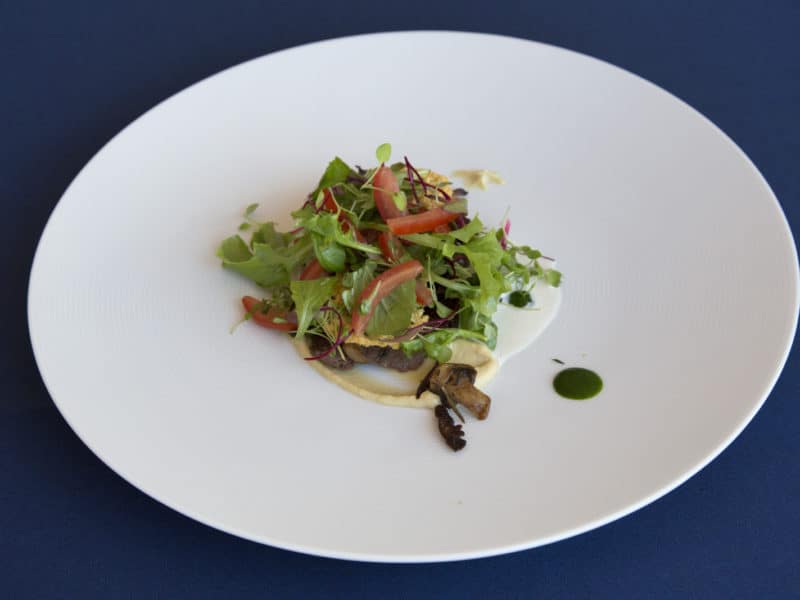Culinary Waves: by Chef Mary Beth Lawton Johnson Not everyone gets to return to their roots for the holidays, but you can bring your roots…

Culinary Waves: Don’t chicken out on lamb, but mutton is another matter
Jan 20, 2019 by Chef Mary Beth LawtonJohnsonCulinary Waves: by Chef Mary Beth Lawton Johnson
Americans tend to eat less lamb than Europeans, and one theory says that it’s because U.S. soldiers during wartime were fed mutton disguised as lamb. Mutton being gamier and tougher than lamb, this ruined the taste for lamb as a menu item on the American dinner table ever since.
However, in North Africa, the Middle East and Europe, lamb is one of the primary proteins – especially for Muslims. And while Americans consume an average of about 5 pounds of lamb per person each year, Australians consume an average of 23 pounds per person each year.
Many people may not realize that lamb is one of the richest sources of CLA (conjugated linoleic acid), an antioxidant that is not manufactured by the human body but supplied by eating herbivores such as sheep, lamb, cows and goats. Lamb is a complete protein and low in fat, since the fat is on the outside of the meat and can be easily trimmed away. One serving supplies over 43 percent of the recommended protein for an adult. It has all the essential amino acids and zero carbs.
With the relatively low price tag on European imported lamb, one would think it would become a staple in American diets, but unfortunately, a rack of lamb on the American dinner table is far less common than other proteins, such as beef or chicken. Although it can be found on menus in restaurants, in American homes lamb is typically reserved for holidays.
Nevertheless, lamb is really a great protein to serve any day on board, and in any number of ways – from lamb loin chops, shaved leg of lamb sandwiches and lamb stew to braised lamb shanks in red wine and herb-encrusted rack of lamb. The possibilities are endless.
Now that we’ve established that it’s a great protein option to have on board, the question is, what exactly are you buying for the yacht? Is it mutton? Spring lamb? Yearling lamb? Grass-fed or grain-fed lamb?
I was recently served mutton disguised as lamb in a lamb stew – just like the men during war – and it was not a pleasant experience for me. It was too gamey, tougher than younger cuts of lamb and larger in size. I was leery of it when it was served to me, but decided to try it anyway. I swore not to ever experience that again. It has been said that there is no real flavor profile difference from castrated male sheep (wethers) to intact males, but age does matter.
So when I purchase lamb, it is either in lamb loin chops, cut as a rack or lamb shanks, and it is definitely spring lamb. I will get specific lamb stew meat from a butcher that carries Colorado lamb, so as not to risk the guests complaining about gamey aftertaste, or I will fabricate the lamb myself if I am making lamb stew or a dish that calls for diced lamb.
When it is time for the yacht to travel, I stock up on my favorite type of lamb. It is simply a personal preference of the owner and guests on board. Colorado lamb is larger, the flavor is not gamey and the meat is tender. With that said, not everyone wants that particular type of lamb.
When it comes down to choosing lamb, especially in a foreign market, it helps to have some knowledge on the subject. Read the package labeling. It will tell you where it is produced.
American lamb is typically fed a grain diet, which results in less gamey flavor. Europeans grass feed their lamb, which results in a more pronounced game flavor. In the American markets, we see Australian and New Zealand racks of lamb.
Lamb is typically a sheep that is 1 year old or less. Spring lamb is baby lamb around 6 months old. The smallest in size, it is easier to spot.
Mutton is meat from a sheep that is over 1 year old. Yearling mutton is meat from a sheep between 1 and 2 years of age, and the flavor is in between that of baby lamb and older mutton.
Cook the lamb to rare/medium-rare for the tenderest option. I use lemon, olive oil, garlic and rosemary as the spices for my rack or loin chops. Simple. I broil the lamb loin chops, putting roasted garlic on top at the very end of cooking. Be sure to cut off the excess fat before broiling.
When it comes to lamb on board, personal taste preference will dictate what type to purchase.
Mary Beth Lawton Johnson is a certified executive pastry chef and Chef de Cuisine, and has worked on yachts for more than 25 years. Comments are welcome below.
Topics:




